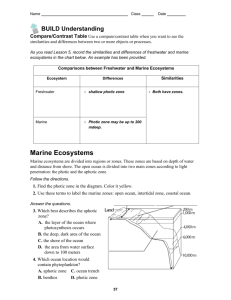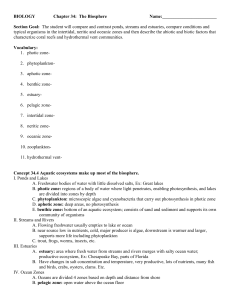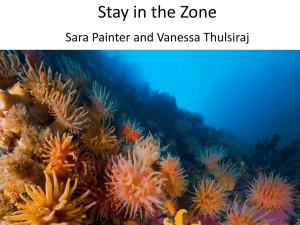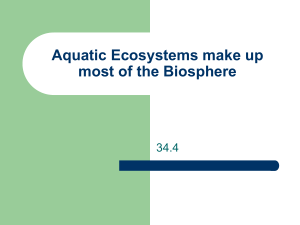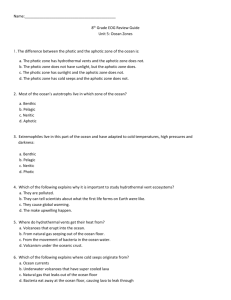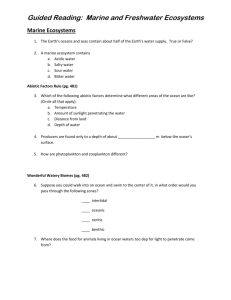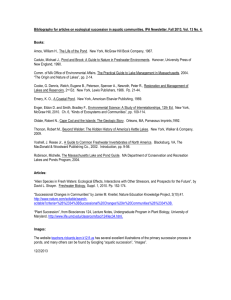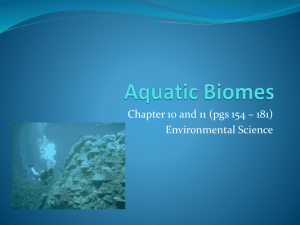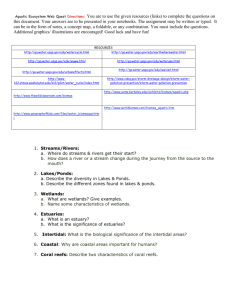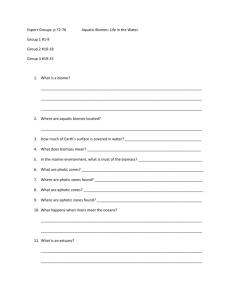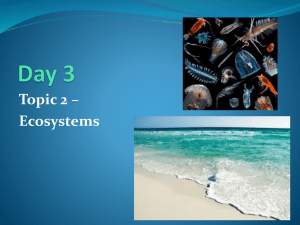Slide 1
advertisement
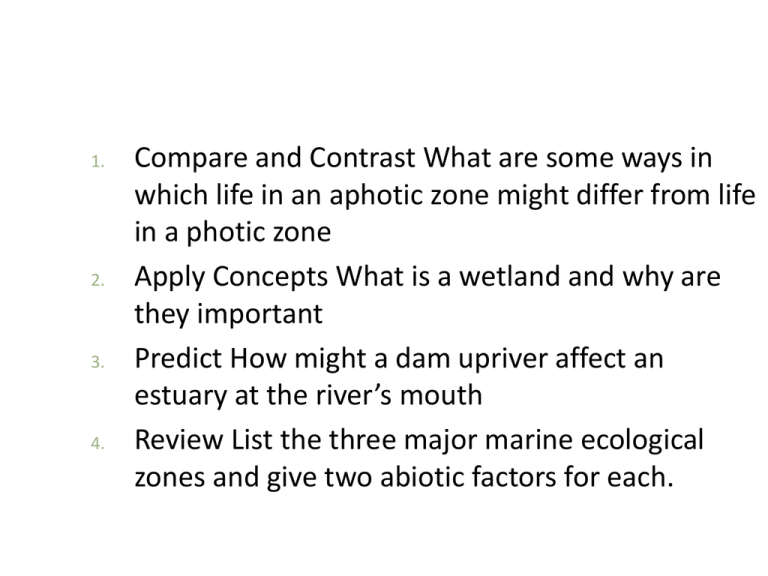
1. 2. 3. 4. Compare and Contrast What are some ways in which life in an aphotic zone might differ from life in a photic zone Apply Concepts What is a wetland and why are they important Predict How might a dam upriver affect an estuary at the river’s mouth Review List the three major marine ecological zones and give two abiotic factors for each. CH 4 ECOSYSTEMS AND COMMUNITIES 4.5 Aquatic Ecosystems Nearly three-fourths of Earth’s surface is covered with water. Aquatic organisms are affected primarily by the water’s depth, temperature, flow, and amount of dissolved nutrients. Water Depth Sunlight penetrates only a relatively short distance through water Photic zone Sunlit region near the surface in which photosynthesis can occur May be as deep as 200 meters in tropical seas May be much, much less. Photosynthetic algae (phytoplankton) live in the photic zone Zooplankton (tiny free-floating animals)eat phytoplankton. Aphotic zone Photosynthesis cannot occur Benthic zone Rocks and sediments and on bottom of lakes and streams Benthos Aquatic organisms that live in the benthic zone. Temperature and Currents Warmer near the equator and colder near the poles Deepest parts of lakes and oceans are often colder than surface waters Currents can carry different temperature waters. Nutrient Availability Not consistent in aquatic habitats. Freshwater ecosystems can be divided into three main categories: rivers and streams, lakes and ponds, and freshwater wetlands. Rivers and Streams Often originate from underground water sources in mountains or hills Have plenty of dissolved oxygen but little plant life near source Sediments build up and plants establish themselves downstream Depend on terrestrial plants and animals that live along their banks for food. Lakes and Ponds Based on a combination of plankton and attached algae and plants Water flows in and out of lakes and ponds and circulates between the surface and the benthos, distributing heat, oxygen, and nutrients. Freshwater Wetlands • Wetland – • • • • Water either covers the soil or is present at or near the surface for at least part of the year May have flowing water Nutrient-rich, highly productive, and serve as breeding grounds for many organisms Purify and filter water Freshwater bogs, freshwater marshes, and freshwater swamps. Estuary Saltwater wetland Where river meets the sea Affected by tides Spawning and nursery grounds for many ecologically and commercially important fish and shellfish species. Marine Ecosystems Ocean divided into zones based on depth and distance from shore: Intertidal ocean. zone, the coastal ocean, and the open Intertidal Zone Submerged in seawater at high tide and exposed to air and sunlight at low tide Barnacles and seaweed attached to rocks. Coastal Ocean Extends from the low-tide mark to the outer edge of the continental shelf Water is brightly lit, and is often supplied with nutrients- very productive. Open Ocean Begins at the edge of the continental shelf and extends outward More than 90 percent of the world’s ocean Depth ranges from 500 m along to more than 10,000 m Divided into photic and aphotic zones. Photic Zone Typically has low nutrient levels and supports only small phytoplankton Most photosynthesis occurs in the top 100 meters of the open ocean. Aphotic Zone Permanently dark Deepest parts of the ocean.
